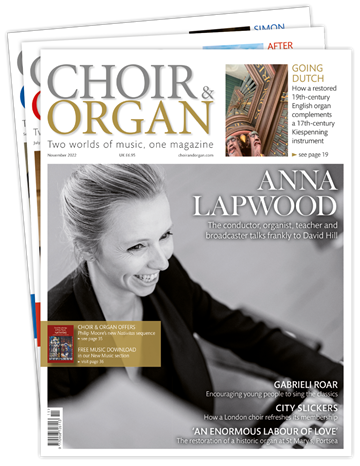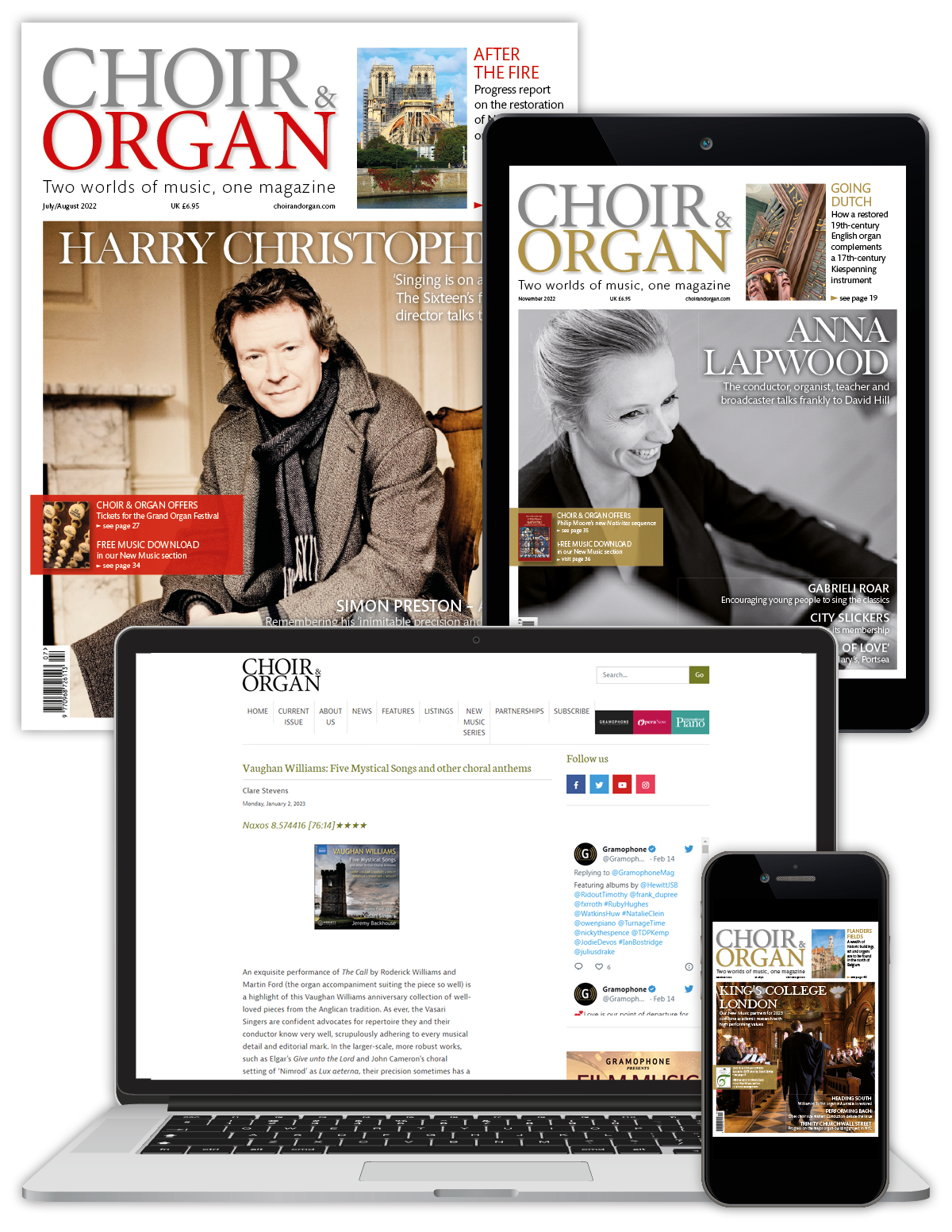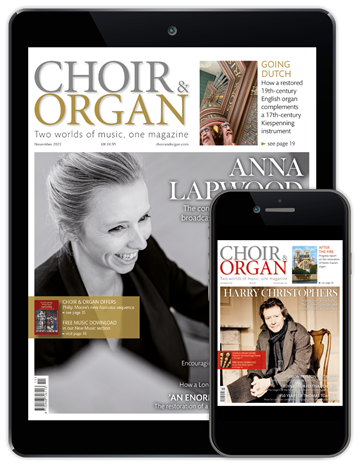Work in progress: J.L. van den Heuvel Orgelbouw
Paul Hale
Sunday, April 2, 2023
Paul Hale explores projects from the workshop of J.L. van den Heuvel Orgelbouw, Dordrecht, Netherlands. Photos courtesy of the organ builder
Let us travel first not to the Netherlands but to Scotland. In the Garnethill area of Glasgow can be found the stunningly beautiful Jesuit church of St Aloysius. Built in the Baroque Revival style between 1908 and 1910, and allied to the exceptionally musical St Aloysius College close by, the church is lavishly decorated. The interior gains a generous resonance through its barrel-vault, boasting a gallery at the west end and another above the shallow north transept chapel. Ideal for organs perhaps, but for over a century the church possessed only an undistinguished instrument in the north transept. In 2015 that was to change.
An organ built in 1993 for Londons Royal Academy of Music (RAM) became available for re-homing when the RAM replaced it with a larger instrument. The 1993 organ was a 24-stop instrument built in the style of Aristide Cavaillé-Coll by the Dutch organ builders J.L. van den Heuvel. In 2014 St Aloysius church bought it, enlarged the west gallery, then commissioned Van den Heuvel to install the organ, which was inaugurated on Advent Sunday 2015. The instrument, with mechanical key and stop action, has a typical mediumsized Cavaillé-Coll type specification. It looks and sounds as if designed for the church – truly impressive and completely convincing.
The reader may be forgiven for thinking it odd that such an instrument has come from a company of organ builders in the Netherlands when such firms are known for their unity of purpose, dedicated to the conservation of the historic organs of the area and the creation of new ones inspired by this immensely rich heritage. So where do J.L. van den Heuvel fit in?
Many budding organists and organ builders are inspired at an impressionable age by a particular organ, organist, organ builder or recording. For the young Jan van den Heuvel, an apprentice in the 1960s at Flentrop Orgelbouw in Zaandam, it was the symphonic organs of the 19th-century French school which ignited his passion. Working in this style was not something he could do at Flentrop, so, having learnt his trade, he set up on his own.
Recent and current work has been as varied as at any time. It includes one unusual commission, for a new III/46 organ in Hersteld Hervormde Kerk, Lunteren. Peter van den Heuvel writes about the project:
Large new organs have not been built in the Netherlands for many years. It was remarkable that the community in Lunteren wanted to build a spacious new church and a prestigious organ in traditional Dutch style. We were involved in the project right from the start and were commissioned, together with the architect, to present a proposal for a church with fine acoustics and suitable organ. The new organ also accommodates an electric stop action with a 10,000 memory-level combination system. This remains unusual in the Netherlands because organ builders and many consultants still [adhere] to the traditions of 150 years ago. At Van den Heuvel we have been accustomed to installing electric stop actions in larger organs as we see this as important for organists.
In 2021 another organ in traditional Dutch style was built for the Sionskerk of the Hersteld Hervormde Gemeente in Ridderkerk, a 29-stop two-manual placed on a narrow but deep platform above the pulpit at the east end of the church. The beautiful plain oak of its late 19th-century Dutch-style case complements the painted pulpit beneath it. The organ is designed for traditional chorale accompaniment, though the string registers and the swell box suggest a tonal world nearer 1900 than 1800. Key and stop action are mechanical and the console is placed on one side of the instrument, in the manner of many such organs in the Netherlands.
A project in 2022 was the restoration and improvement of an interesting I/10 instrument in the Hervormde Kerk at Hagestein. This organ was built in 1920 by De Koff, with a plain but elegant pine case sitting on a west gallery. During a recent church restoration, organ case and gallery were repainted with oak graining. Following this work, at the beginning of 2021, a plan was drawn up to restore the organ. During a 1960s restoration the organ had lost its 16ft manual Bourdon in favour of a new 2ft Octaaf. The 2021 plan was that a Bourdon 16 should return to the manual and the Octaaf 2 would be moved to a new ‘clamp’ slide at the front of the windchest. In the first week of January 2022, the organ was disassembled and transferred to the workshops in Dordrecht. The restoration of all the parts took place there and the organ was returned to the church in April.

The 1993 instrument, previous in the Duke's Hall, RAM, now installed at St Aloysius, Glasgow
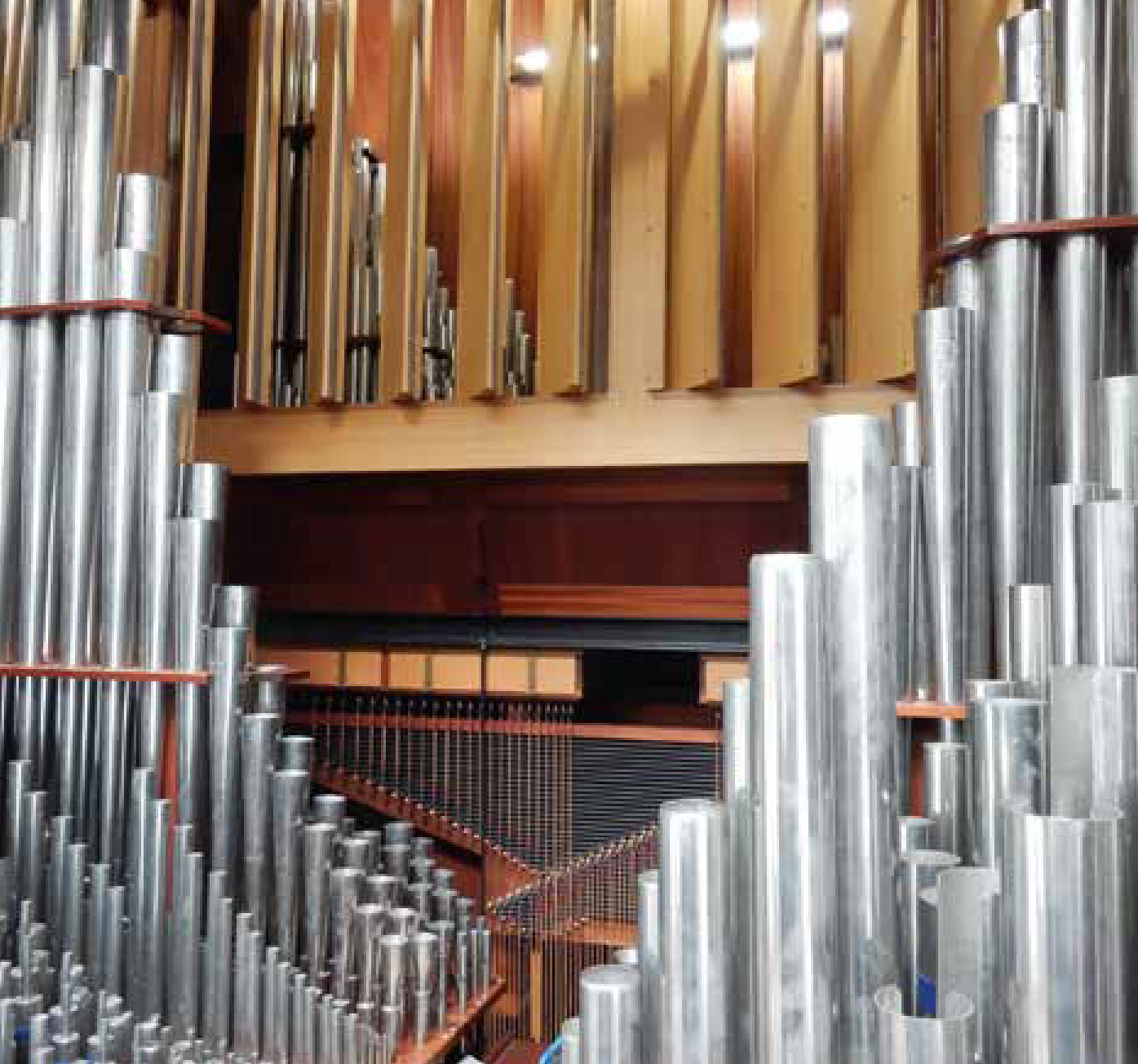
St Aloysius manual pipework and Récit rollerboard
The most recent project in the workshop is an instrument for the Hersteld Hervormde Gemeente of Nieuwaal. In 1967 Willem van Leeuwen built a new instrument within beautiful 1909 casework in a Leiderdorp convent chapel. The convent closed in 1971 and Van Leeuwen transferred the organ to the Evangelical Lutheran Church in Den Helder, which in 1995 became a Dutch Reformed church, then closed in 2013. In 2022, the Restored Reformed Municipality of Nieuwaal purchased the organ and commissioned the Van den Heuvel firm to restore and install it. The organ is being overhauled, its case restored and the stop list expanded. An extra stop is being added to each keyboard and Pedal: Cornet IV, Dulciaan 8 and Fagot 16. The over-high mixture compositions will be adjusted and a conical Quint 1⅓ transposed to make a Nasard 2⅔. The Pedal Quintadeen is being replaced by an Octaafbas 8 of mahogany.
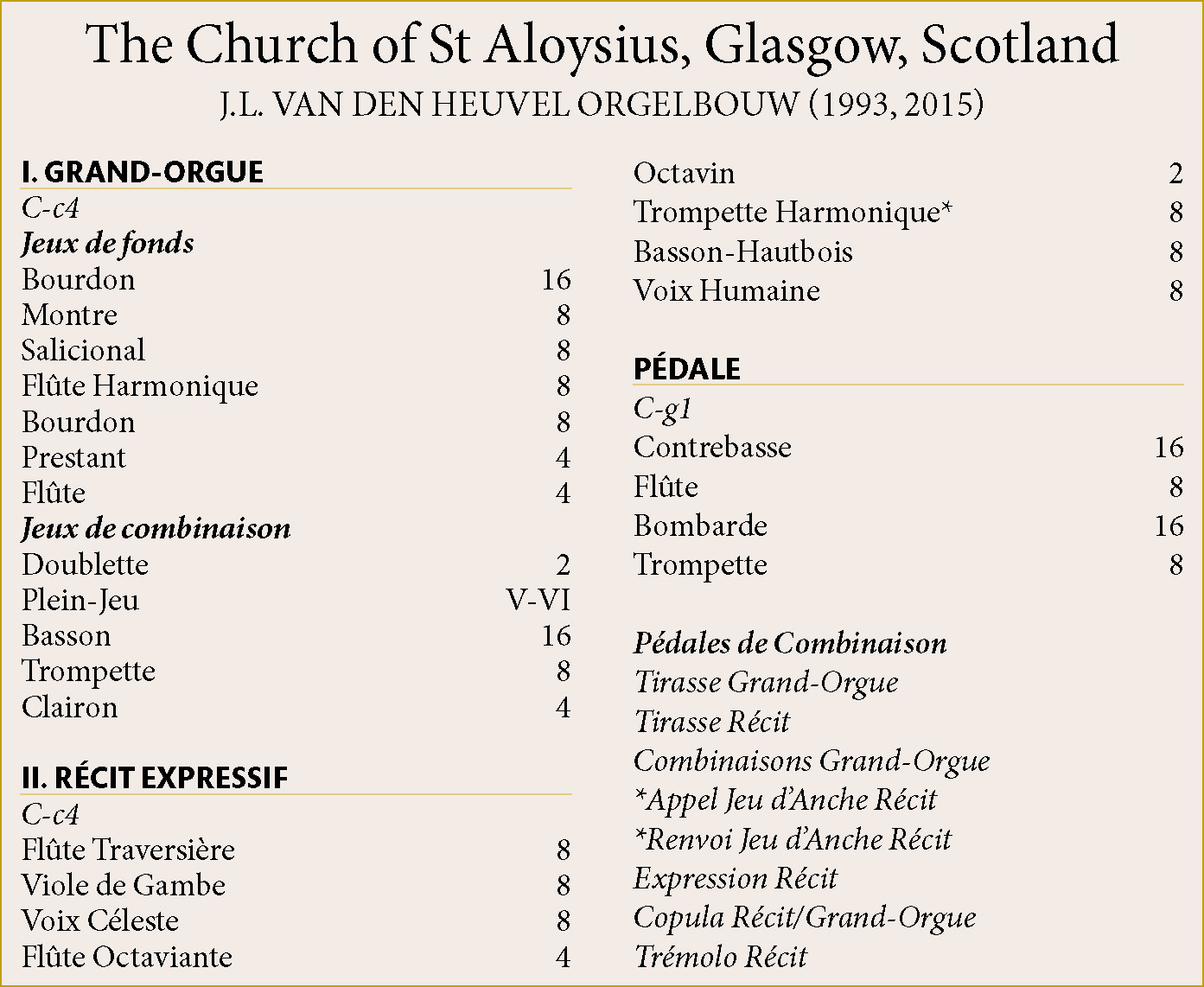
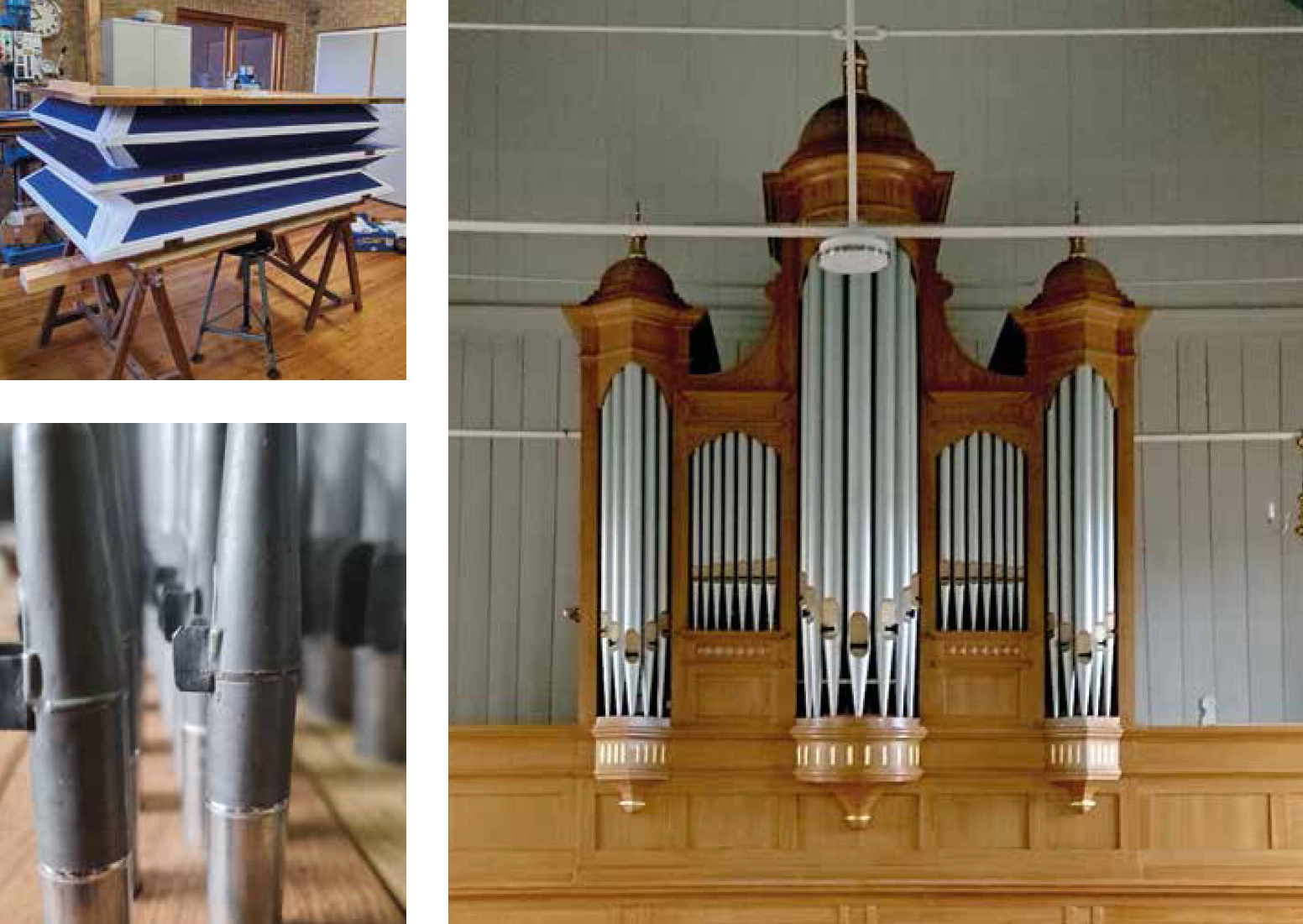
The double-rise reservoir for Hagestein after releathering; the restored organ and church at Hagestein; restored feet on small tapered pipes at Hagestein

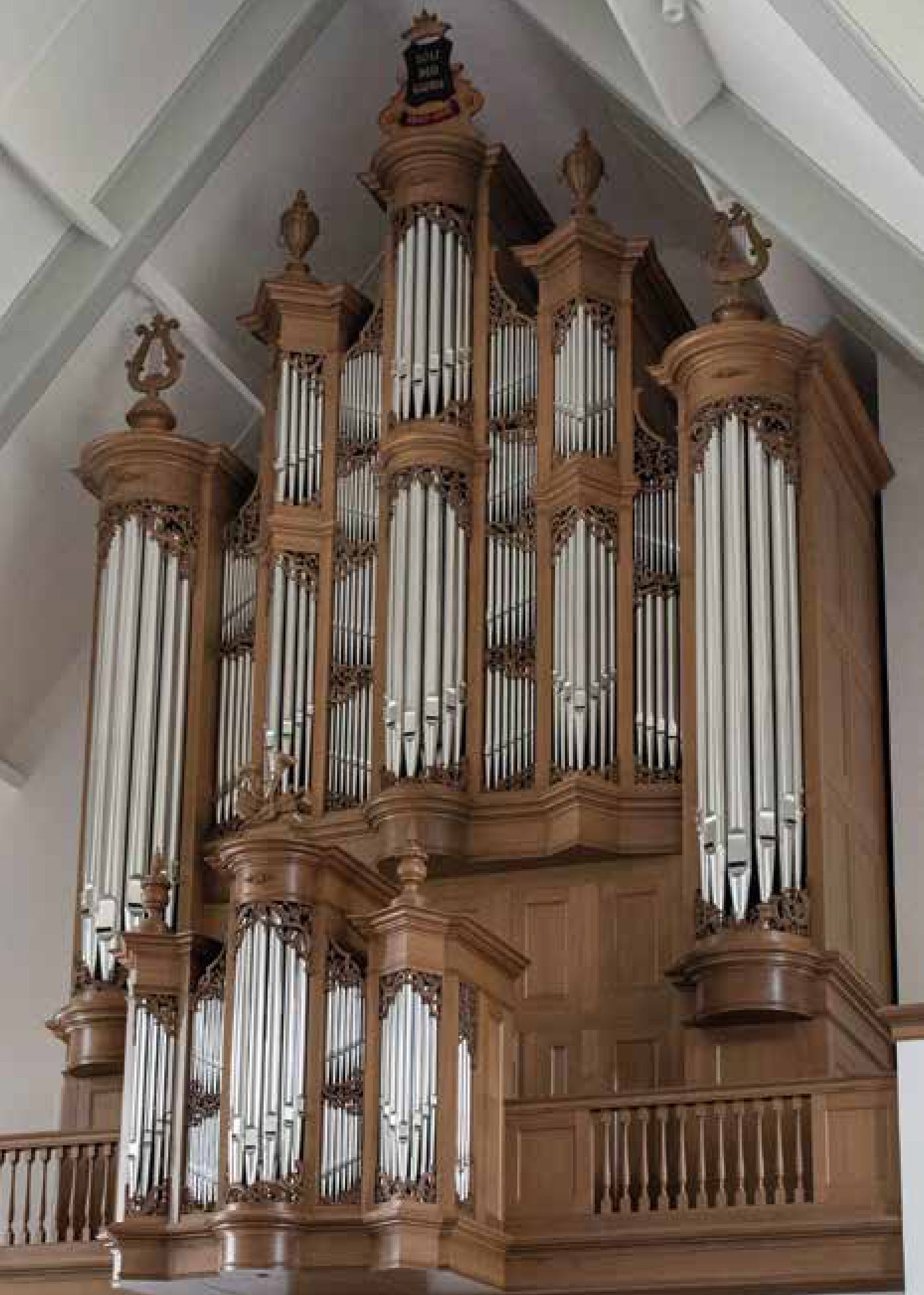
The III/46 instrument built in 2019 for Lunteren; every part was constructed in the Van den Heuvel workshop
Peter van den Heuvel concludes:
Working with new instruments and with old ones are two completely different worlds. Every pipe organ has a history that is closely bound up with people, epochs and events. And each of these histories is different. This makes organs from the past unique witnesses to their age. We are required to refer back to the initial technical and tonal status of that cultural inheritance which may have been partially lost through the passage of time. Missing parts are reconstructed in accordance with material and style of the original builder. The sound of a restored organ is a way for us to experience living history. We see our work as part of a continuum: we are doing our best to ensure that the history of organ building is handed down to generations yet to come. It is this that makes restoration such a highly gratifying task.
60 years of development
Jan van den Heuvel established his own company in 1967. Aged 20, he was the youngest independent organ builder in the Netherlands. That year he used the skills he had refined in all departments at Flentrop to build his first instrument of one manual and 10 stops. The Singelkerk at Ridderkerk was so impressed that the church commissioned a new three-manual organ of 32 stops. To build it Jan needed a larger workshop, so designed a spacious new building adjacent to the old workshop. The success of the 1972 Singelkerk organ resulted in many orders for new organs and for the restoration of older instruments. More skilled staff came to work with Jan including his younger brother Peter, who joined in 1975, the year when a new 33-stop organ was installed in St Lambertus church in Strijen.
Peter shared Jan's passion for and interest in 19th-century French organ building. Their contact with French organists such as Michelle Leclerc and Daniel Roth spurred them on to further studies of Cavaillé-Coll organs. This led to numerous visits to France, not only to study and evaluate the larger and famous Cavaillé-Coll organs but also many of his smaller instruments. Meticulous measurements were made, followed by detailed study of the tonal design. These researches have informed and inspired their work ever since.
The commission which propelled the company firmly onto the international stage was for a four-manual organ for the Nieuwe Kerk in Katwijk aan Zee. Many ideas developed over the years found their way into this organ, constructed during 1981-83. The instrument is situated behind a historic organ case dating from 1822 and was at the time the largest new organ ever built by a Dutch builder. Both key and stop action are mechanical and the Grand-Orgue, Récit and Pedal actions have Barker-lever machines. There are 80 speaking stops comprising 5,168 pipes, despite the organ case itself being quite small. Worthy of note are the three 8-rank Cornets Décomposés : 32ft on the Pédale, 16ft on the Grand-Orgue and 8ft on the Positif. The richly decorated console is made in the French Romantic tradition with the Jeux de fonds to the left and the Jeux de combinaisons to the right. Daniel Roth gave the dedication recital on 20 May 1983. This dramatically French symphonic organ soon became known around the world through recordings and Jan van den Heuvel was awarded a Médalle d'Argent in 1984 by the Société Académique d'Arts et Lettres (Paris) ‘for his contribution to French organ building'.
For years the Paris church of Saint-Eustache had never achieved an organ of the distinction which the building deserved. Titulaire Jean Guillou, along with organ expert Jean-Louis Coignet, were sufficiently impressed with the concept and execution of the Katwijk aan Zee organ to invite the Van den Heuvel firm to enter a bidding competition to design, build and install a colossal new organ for Saint-Eustache. They won the competition and completed this – one of the largest organs in France – in 1989. The organ has an attached console and also a stately mobile console in the nave, 101 speaking stops and 147 ranks, a total of 8,000 pipes.
In the years following this landmark project, the firm has continued to build instruments of all sizes, from house organs to the large symphonic French-style instruments in the Victoria Hall, Geneva, Switzerland (IV/71, 1993), the Katarina Kyrka in Stockholm, Sweden (III/62, 2000), and for the Danish Broadcasting Corporation's 1,800-seat Concert Hall in Copenhagen (IV/91,2009). Restorations have included numerous historic Dutch organs plus the renowned 1999 four-manual Flentrop in the Grote Kerk at Breda. The Van den Heuvel workshop, unusually, is spacious and tall enough for even the largest of their organs to be assembled, preliminarily voiced and then played, before being packed for shipping.
Peter van den Heuvel comments:
For new organs, we search for the very best realised in times past in order to let this result in a very personal style. Van den Heuvel build as much as possible in their own workshops in order to meet with the special requirements and wishes of organ consultants and customers. One of our main principles is to get to know the special atmosphere and location for each new instrument we construct. We believe that the design of the organ, its acoustic concept and its technical structure are all equally essential to its completion and character. Thus each instrument develops its own character and takes a certain place in the history of our company. Every Van den Heuvel organ represents the work of the whole team. Our success is based on the commitment and the continuously improving expert knowledge of all our employees. Only qualified specialists work in our company, and they invest their heart and soul in it.




